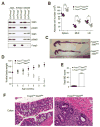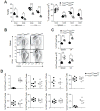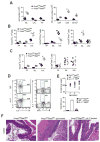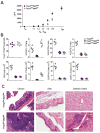CD4+ regulatory T cells control TH17 responses in a Stat3-dependent manner
- PMID: 19797626
- PMCID: PMC4408196
- DOI: 10.1126/science.1172702
CD4+ regulatory T cells control TH17 responses in a Stat3-dependent manner
Abstract
Distinct classes of protective immunity are guided by activation of STAT transcription factor family members in response to environmental cues. CD4+ regulatory T cells (T(regs)) suppress excessive immune responses, and their deficiency results in a lethal, multi-organ autoimmune syndrome characterized by T helper 1 (TH1) and T helper 2 (TH2) CD4+ T cell-dominated lesions. Here we show that pathogenic TH17 responses in mice are also restrained by T(regs). This suppression was lost upon T(reg)-specific ablation of Stat3, a transcription factor critical for TH17 differentiation, and resulted in the development of a fatal intestinal inflammation. These findings suggest that T(regs) adapt to their environment by engaging distinct effector response-specific suppression modalities upon activation of STAT proteins that direct the corresponding class of the immune response.
Figures





References
Publication types
MeSH terms
Substances
Associated data
- Actions
Grants and funding
LinkOut - more resources
Full Text Sources
Other Literature Sources
Molecular Biology Databases
Research Materials
Miscellaneous

